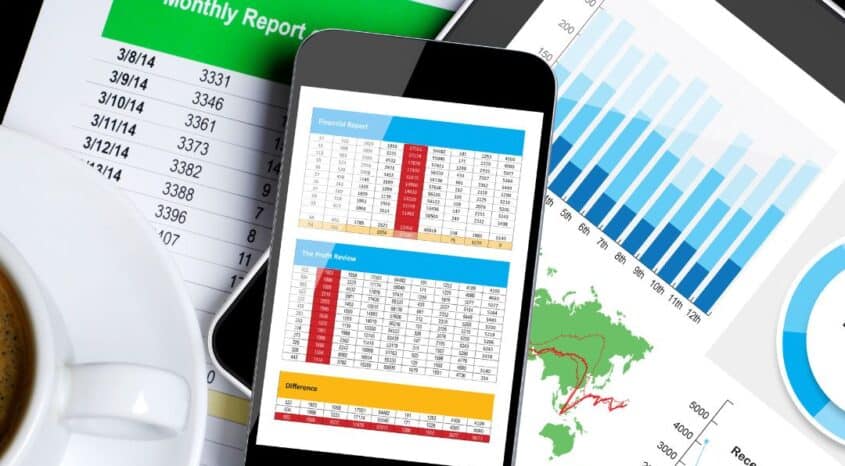From rising shipping costs to worries about consumer confidence, it might feel like there’s a risk around every corner in retail right now.
For some online merchants, the toughest part can be staying up to speed – the commerce landscape is evolving so quickly that new problems crop up all the time.
However, while it is an undoubtedly challenging time, it’s important not to get bogged down by doom and gloom. Instead, merchants should focus on taking swift action to address the most pressing perils.
As the leading Retail Operating System, we’ve outlined the 3 biggest risks brands like yours currently face – and what you can do to mitigate them.
Risk #1 – supply chain disruption
Without a doubt, supply chain struggles are the biggest threat to retail brands in 2022. In fact, according to Brightpearl’s research, 85% of UK retailers and 80% in the US have been impacted in the last 12 months (or are currently impacted) by supply chain issues.
From a shortage of goods (affecting up to 68% of brands) to the rising price of raw materials (affecting up to 47% of brands), the ongoing supply chain crisis is reaching every corner of retail.
According to our study, half (52%) of US brands and (46%) of UK retailers have experienced stockouts in the last year that have resulted in a loss of sales. More than a quarter (28%) cite the ongoing crisis as their number one threat and a third say it creates a major challenge during peak periods.
Consumers are feeling the full force of the disruption, too; a quarter (26%) of customers in the UK have annoyingly discovered a product is sold out or unavailable when they came to order online. In the US, the average American was let down four times when shopping online last peak season.
Altogether, the stats paint a worrying picture of escalating supply chain disruption – and a clear need for action. Keep reading to learn more about your next steps.
Risk #2 – poor cash flow
Cash flow is a top concern for most online businesses right now – and rightly so. More than a quarter of UK firms (26%) risk running out of cash in four weeks if things do not improve with supply. And, with a shortage of goods impacting 68% of businesses and longer lead times hitting at least 54%, brands have no choice but to pay more attention to how long it takes them to convert inventory into cash.
Retailers are also under huge pressure to strike the perfect balance between having too much stock and running out. The trouble is, everything feels risky – from placing bulk inventory orders to using a ‘just in time’ approach. It’s like there’s a cloud of cash-flow chaos following retailers around.
Risk #3 – low customer retention
Customer retention is worth investing in. We know that the chance of selling to an existing customer is 60-70%, but the chance of selling to a new prospect is just 5-20%. However, for most industries, the average customer retention rate is below 20%.
Modern consumers are a fickle bunch. They might love your brand, but if you can’t give them what they want, when they want it, they’ll go elsewhere. For instance, our study revealed that 37% of shoppers switched to a new brand simply because they had an item they wanted in stock.
The reality is that customer retention is intrinsically linked to what happens after a customer hits the ‘buy’ button. If their experience is good – including prompt dispatch, good comms, fast delivery – retention is good. If their experience is bad – including errors, delays or lack of comms – retention drops off dramatically. In fact 77% of 1-star reviews on Trustpilot are a direct result of a poor post-purchase experience.
And with 22% of shoppers being frustrated by canceled order messages after items were oversold and 26% feeling annoyed by lack of stock in the last year, low customer retention is a real and urgent risk for online businesses.
What can you do?
The supply chain disruption isn’t ending anytime soon. In fact, experts predict it will carry on through 2023 and beyond, which means it’s worth investing in long-term solutions, like business intelligence and Inventory Demand forecasting software which provides greater clarity, confidence and certainty, even amidst the chaos of current times.
By analyzing exactly how much stock is needed to meet future demand using cutting-edge software that takes into account delays and longer lead times as well as promotions and seasonal peaks, retailers can keep supply steady and avoid issues like stockouts altogether. In the fight against supply chain disruption, demand forecasting should be retailers’ weapon of choice.
When it comes to the challenge of cash flow – advanced insights are helping many retailers eliminate guesswork and make cash-flow critical decisions faster and with more confidence.
And for brands that want to improve customer retention, overhauling post-purchase operations should top the to do list. That means streamlining and simplifying operations and automating as many key workflows as possible in order to save time, eliminate errors and boost efficiency throughout your business. Automation doesn’t have to be complicated, either – Brightpearl’s Automation Engine uses simple rules which save customers two months every year, reduces errors by 60% and cuts staff costs in half.
Ultimately, technology, such as Brightpearl, has the power to help retailers navigate each of the three biggest risks to their businesses right now – it’s time to take advantage of it.




